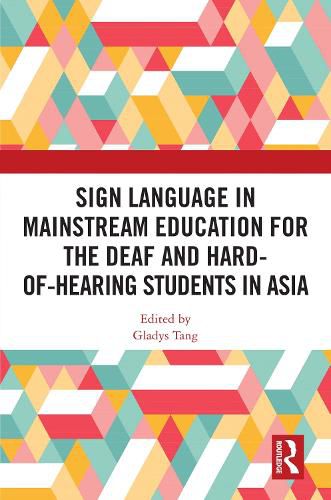Readings Newsletter
Become a Readings Member to make your shopping experience even easier.
Sign in or sign up for free!
You’re not far away from qualifying for FREE standard shipping within Australia
You’ve qualified for FREE standard shipping within Australia
The cart is loading…






This book focuses on two means of recruiting sign language to support DHH students in mainstream education in Asia. The first approach is educational sign interpreting, which has been adopted to support signing DHH students in mainstream classrooms in Taiwan.
Contributions report on a questionnaire survey with post-hoc interviews examining the reactions of students, parents, a resource teacher, and an interpreter towards providing this service in the education system. The second approach is co-enrolment, which involves bringing a critical mass of DHH students into the mainstream classroom for them to study with hearing children, supported by either a deaf teacher or a teacher highly proficient in signing, who co-teaches with a regular teacher and co-shares responsibilities in taking care of the whole class of students. The chapters exemplifying this approach report on the effects of co-enrolment on DHH students' language development and academic attainment.
This book was originally published as a special issue of Deafness & Education International.
$9.00 standard shipping within Australia
FREE standard shipping within Australia for orders over $100.00
Express & International shipping calculated at checkout
Stock availability can be subject to change without notice. We recommend calling the shop or contacting our online team to check availability of low stock items. Please see our Shopping Online page for more details.
This book focuses on two means of recruiting sign language to support DHH students in mainstream education in Asia. The first approach is educational sign interpreting, which has been adopted to support signing DHH students in mainstream classrooms in Taiwan.
Contributions report on a questionnaire survey with post-hoc interviews examining the reactions of students, parents, a resource teacher, and an interpreter towards providing this service in the education system. The second approach is co-enrolment, which involves bringing a critical mass of DHH students into the mainstream classroom for them to study with hearing children, supported by either a deaf teacher or a teacher highly proficient in signing, who co-teaches with a regular teacher and co-shares responsibilities in taking care of the whole class of students. The chapters exemplifying this approach report on the effects of co-enrolment on DHH students' language development and academic attainment.
This book was originally published as a special issue of Deafness & Education International.